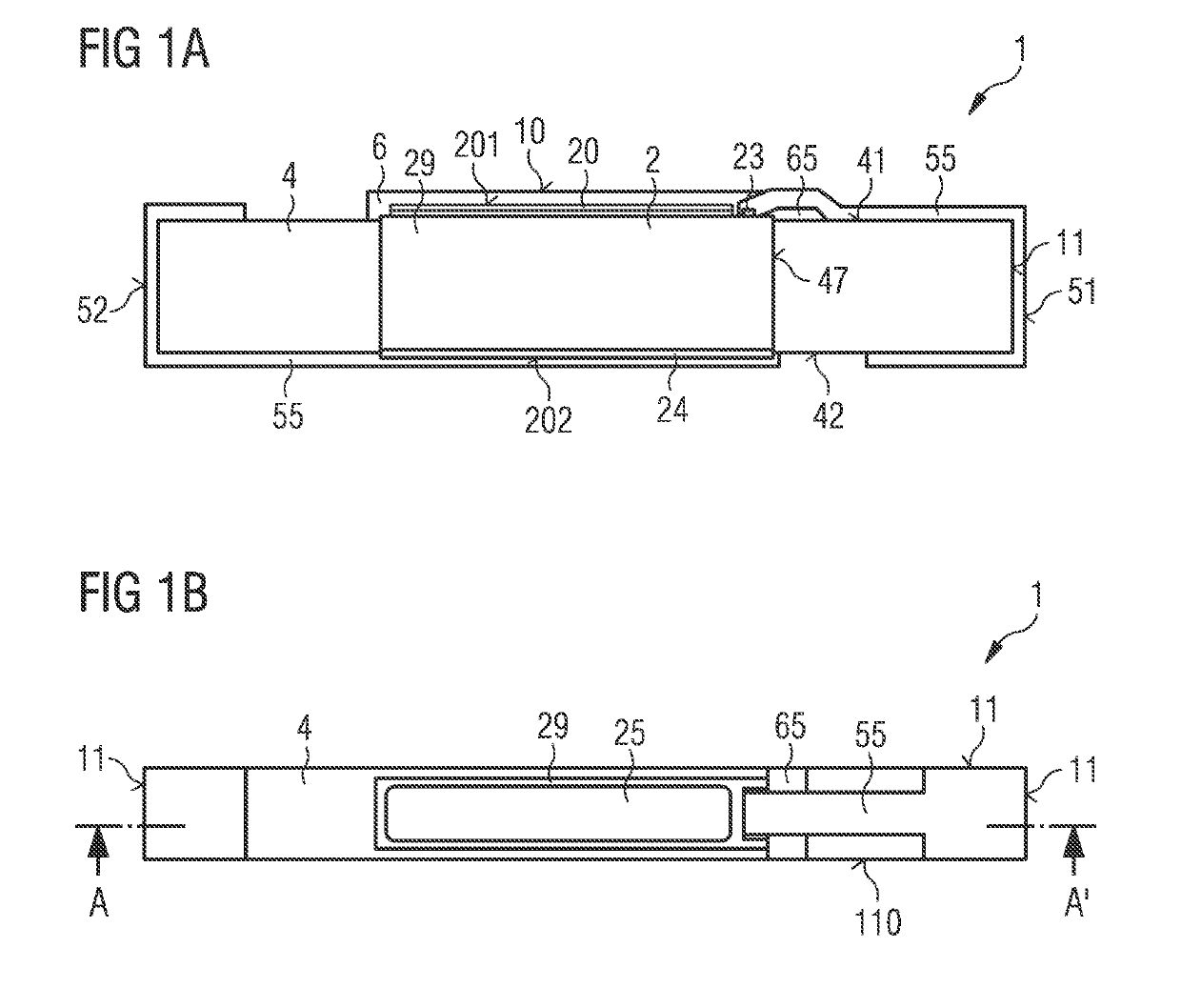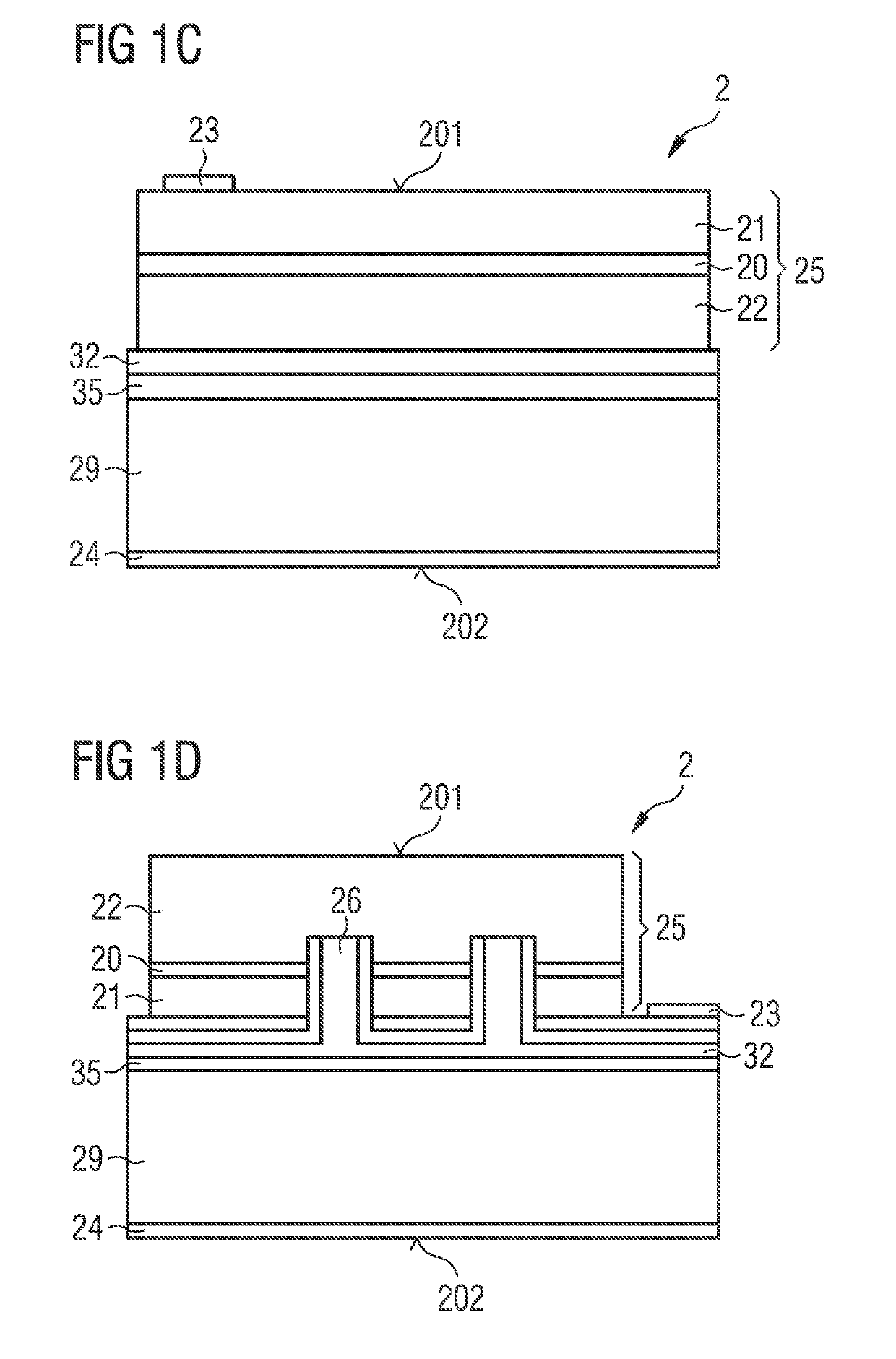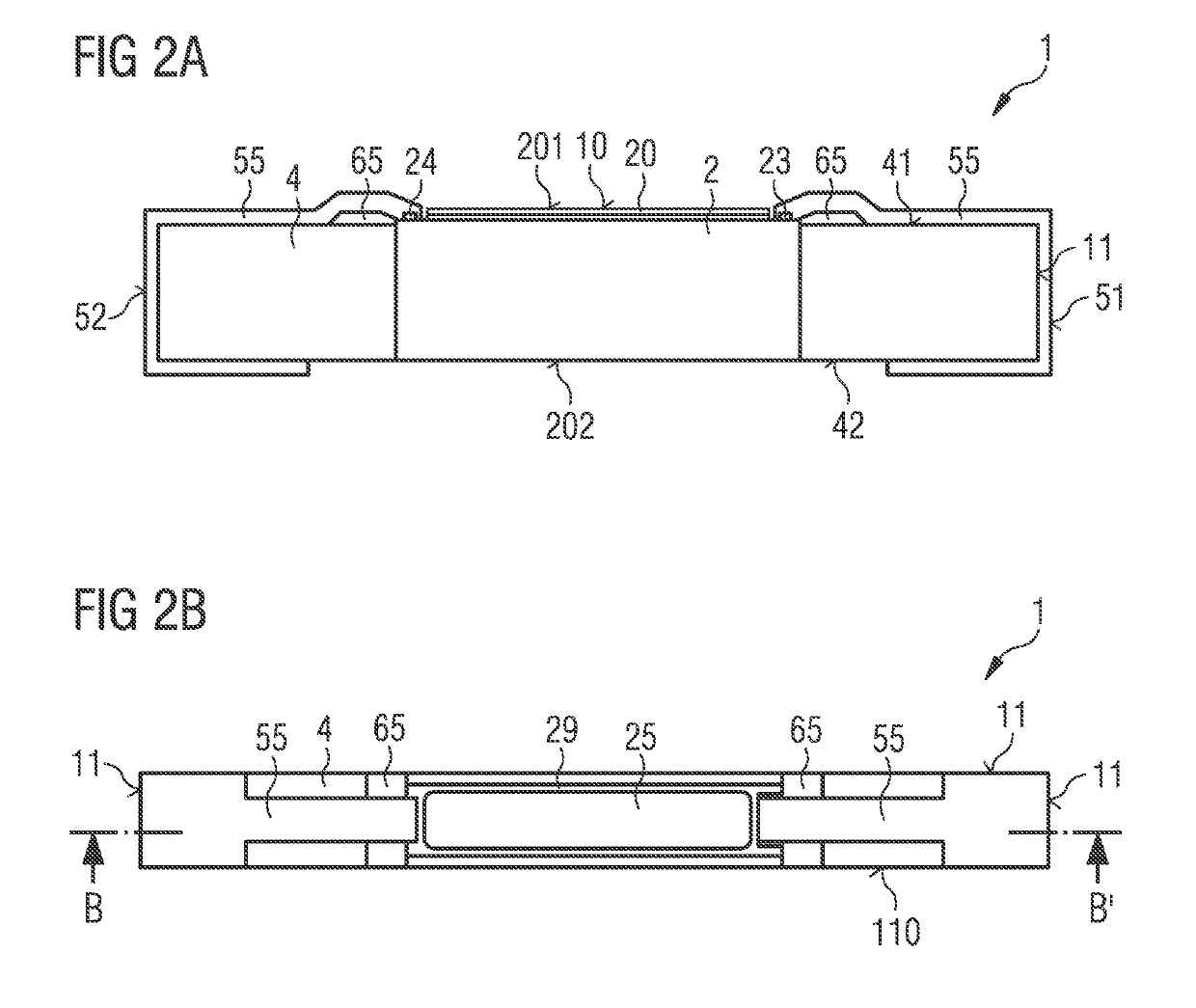Optoelectronic semiconductor device having a side face as mounting side
a technology of optoelectronic semiconductor and mounting side, which is applied in the direction of semiconductor devices, semiconductor/solid-state device details, electrical equipment, etc., can solve the problem that the requirements cannot be achieved easily with conventional designs
- Summary
- Abstract
- Description
- Claims
- Application Information
AI Technical Summary
Benefits of technology
Problems solved by technology
Method used
Image
Examples
Embodiment Construction
[0056]A first exemplary embodiment of a semiconductor device 1 is shown schematically in FIGS. 1A and 1B.
[0057]The semiconductor device 1 has a semiconductor chip 2 provided for generating radiation with a semiconductor layer sequence 25. The semiconductor layer sequence has an active region 20 provided for generating radiation. A radiation exit surface 10 of the semiconductor device runs parallel to the main extension plane of the active region. Details of the semiconductor chip 2 are explained in greater detail with reference to two exemplary embodiments in connection with FIGS. 1C and 1D.
[0058]Molded onto the semiconductor chip 2 is a molding 4. The molding 4 is used for the mechanical stabilization of the semiconductor chip and forms a housing for the semiconductor chip. The molding extends perpendicular to the radiation exit surface 10 between a rear side 42 of the molding lying opposite the radiation exit surface and a front side 41 of the molding. At the places at which the m...
PUM
| Property | Measurement | Unit |
|---|---|---|
| thickness | aaaaa | aaaaa |
| reflectivity | aaaaa | aaaaa |
| reflectivity | aaaaa | aaaaa |
Abstract
Description
Claims
Application Information
 Login to View More
Login to View More - R&D
- Intellectual Property
- Life Sciences
- Materials
- Tech Scout
- Unparalleled Data Quality
- Higher Quality Content
- 60% Fewer Hallucinations
Browse by: Latest US Patents, China's latest patents, Technical Efficacy Thesaurus, Application Domain, Technology Topic, Popular Technical Reports.
© 2025 PatSnap. All rights reserved.Legal|Privacy policy|Modern Slavery Act Transparency Statement|Sitemap|About US| Contact US: help@patsnap.com



